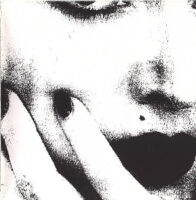
When The Whitey Album came out, many Sonic Youth fans and critics treated it as a trifling post-modern prank. And yes, it does have its share of shtick, starting with the project name and nudge-wink title. You wondered if Thurston Moore, Kim Gordon, Lee Ranaldo, and Steve Shelley were trolling their underground-rock fan base with two Madonna covers, a karaoke take on Robert Palmer’s MTV smash “Addicted To Love,” a clever-clever homage to John Cage’s “4′ 33”,” and an embarrassing rap fiasco. But while at the time those moments dominated the discourse around The Whitey Album, the record actually contains some of the Youth’s most interesting anomalies.
Remember, the recording of The Whitey Album occurred between 1986’s EVOL and 1987’s Sister—Sonic Youth’s peak period. So even if they were just screwing around, they couldn’t not create fascinating shit. Plus, they had fIREHOSE bassist/vocalist Mike Watt in the studio with them. Back then, Watt was depressed about the tragic vehicular death of long-time Minutemen bandmate D. Boon. When Watt traveled to the East Coast with girlfriend/Black Flag bassist Kira Roessler, who was headed to Yale for an internship, he stayed with Sonic Youth for a bit and ended up recording two songs with them destined for EVOL. The Ciccone Youth side project was part of an effort to inspire Watt to start playing music again and lift him out of his funk. It worked, and in the process SY fans got a nice little curio.
As for the Madonna and Palmer covers, they inspired yuks back in the day, but did Ciccone Youth do it for the lulz or because they genuinely loved the songs? With 20/20 hindsight, I’ll say both. Another goof, the self-explanatory “Two Cool Rock Chicks Listening To Neu,” finds Gordon and Suzanne Sasic talking about managing Dinosaur Jr. while listening to “Negativland.” Near the end, there’s a short burst of grandiose noise rock with what sounds like guitar god J Mascis going the fuck off on his axe. But “Tuff Titty Rap” [insert Beavis & Butthead laugh] is the group’s nadir, with Moore “rapping” over clunky, rudimentary drum-machine beats. 40 seconds of it is too long.
Now let’s move on to the good parts that compose the majority of The Whitey Album. “G-Force” pits Kim Gordon freestyling a spoken-word story about a brash woman up for adventure against oneiric, slow-motion psychedelia with subliminally funky drum-machine beats. “Platoon II” offers more basic, funky beats, which are swathed with ice-cold guitar feedback and gently delayed klang. It’s a real low-key head-nodder that foreshadows Dälek, who are the only hip-hop crew ever to collaborate with krautrock legends Faust. “Macbeth” is rugged, ruthless funky rock that stands among Sonic Youth’s best songs. “Children Of Satan/Third Fig” excellent hypnotic rock with a pseudo-robotic beat that augments the sonorous clangor and chiming of the guitars, until a bass riff ruptures the mesmerism at song’s end. The revelation here is how damned groovy this unintentional (?) funk comes across.
Some other highlights include “Moby-Dik,” a minute of Dieter Moebius-like electronic weirdness; “March Of The Ciccone Robots,” which sounds like a cover of PiL’s “Chant” with a ton of sludge caked on it and powered by pummeling, quasi-techno beats; and “Making The Nature Scene,” a scouring, beat-heavy rework of a harrowing Confusion Is Sex song that sounds like Big Stick.
So, look beyond the gimmicks and you have a fascinating oddity from an underground band who, when The Whitey Album received its delayed release, were ascending to alt-rock-mainstream success. More than 30 years later, the record stands out not as wry meta-commentary, but as a brilliant lark/tangent in Sonic Youth’s sprawling catalog. -Buckley Mayfield


